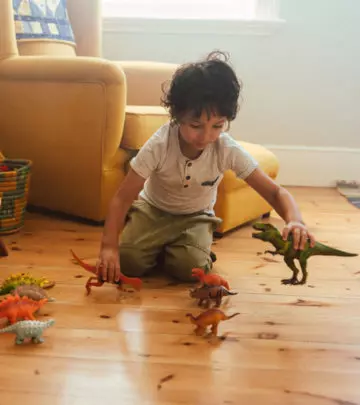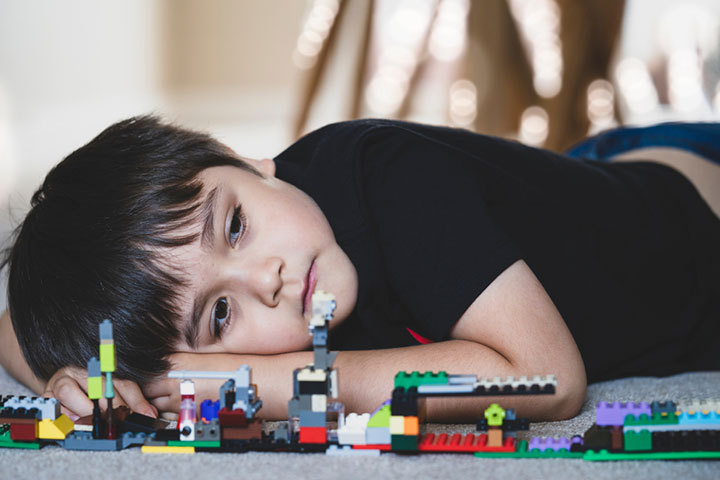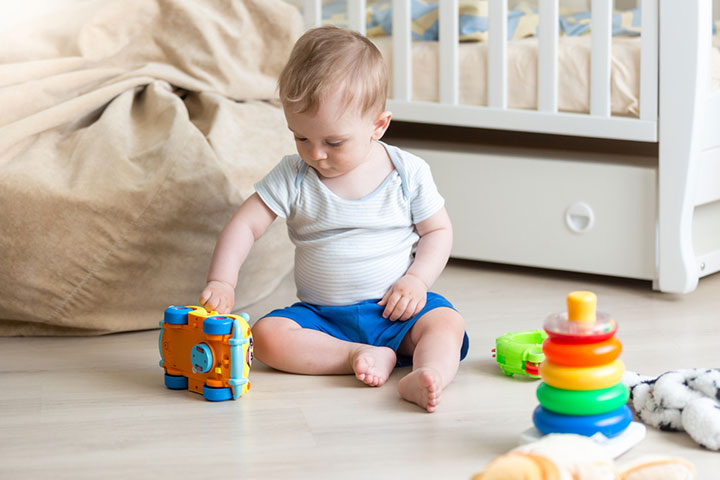
Image: Shutterstock
Playing with your little ones is one of the best ways to connect with your children on a deeper level. You get to gain their trust, enjoy happy moments and improve your bond while enhancing their social and communicative skills. However, it’s impossible to be present around them or entertain them all the time. So eventually, you have to make them realize the importance of playing alone or with their siblings. But making them play independently doesn’t mean handing them a smartphone and letting them binge or play for hours. There are other ways to make them play alone and enjoy their alone time without any unwanted side effects.
Continue reading to find practical tips to encourage your kid to play independently without affecting their social development. So let’s get started.
Why Is It Necessary To Have Your Kid Play Independently
Your kid’s growth will benefit significantly from independent play because it will develop their imagination and inventiveness. Your child will learn to try something out on their own before asking for help, which will help them become more independent. Additionally, it will improve their capacity for problem-solving, critical analysis, and judgment. However, they will lose confidence if they continue to rely on you for assistance. Independent play establishes regularity, consistency, and a greater sense of assurance.
Tips To Encourage Your Kid To Play Independently
1. Do Not Have Too Many Toys
Even though it goes against the idea of encouraging individual play, having too many toys might become overwhelming. According to one study, children’s social interaction, creativity, communication, empathy, and ability to control their boredom and irritation increased after three months without toys(1). While not all early childhood development specialists believe that toys should be banned, many concur that having too many toys is undesirable. Choose carefully and maintain their age-appropriacy. To keep toys exciting and new, switch them out every couple of months.
2. Set Screen Restrictions
Yes, it is challenging for your kid to spend no screen time. Mom also occasionally just wants a break. However, restrict how much time your child spends glued to the TV or iPad. Keep track of the content your kid is interacting with. While YouTube videos and applications don’t demand a sustained attention span, TV shows and movies do. The path to free play for your kid.
3. Appreciate Their Efforts
The best way to influence a child’s behavior is to appreciate its positive aspects. For example, when your kid has done playing alone, give them praise. Tell them they have performed a fantastic job playing alone. Give them warm kisses and hugs. Receiving your compliments will encourage kids to keep doing what they’re doing since kids want to please their parents.
4. Establish A Parallel Playing
Children playing side by side without truly interacting is known as parallel play. You can follow this example with your child to promote the independent play. For instance, when reading a novel, have your kid sit next to you and read or draw. Again, you’ll set an example of behavior for your kid.
5. Start Slow And With Realism
Your kid will be ready to play alone for longer stretches as they age. How long they can do this depends largely on your child’s personality; there is no magic age. The majority of two-year-olds can’t play by themselves for an hour. Increase the time progressively, starting with a few minutes.
6. Create A Secure Play Area
Offer simple, age-appropriate accessories or toys like dolls, cubes, building sets, and puzzles. The best toys are those that are inactive. Ideally, offer battery-free toys. Instead, allow the kid to independently use their imagination to develop a play scenario. You can see the play area, so it should be kid-proof.
7. Spend Time Together
Kids seek social company. Before letting them play alone, you must ensure you have a reasonable amount of time with them. Manage extra hours for interaction just as you might set times for their independent play. This time (without screens) can be spent together for ten or thirty minutes. Reading, playing, cooking, going for a walk, and any other activity that encourages closeness might be viewed as bonding time.
8. Make It A Habit
Playing alone is a skill, but improving it requires repetition and regularity. Including play in their everyday routine is the quickest way to maintain consistency. Choose a moment or two during the day when playing is the only goal. You are present nearby at this time, but you aren’t engaging in play either with or for them.
One of the critical pillars of your kid’s day is independent playtime. It empowers them to develop confidence, attentiveness, and much more. Using the tips mentioned above, you can effectively allow your child to enjoy their playtime without bothering you. In the comment section below, let us know about your kids and their independent play stories. Happy Parenting!


















